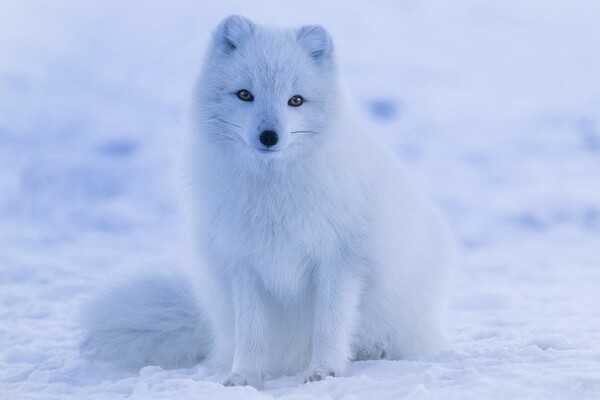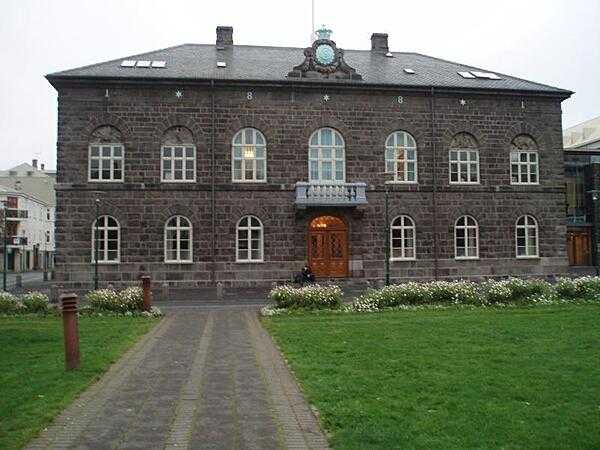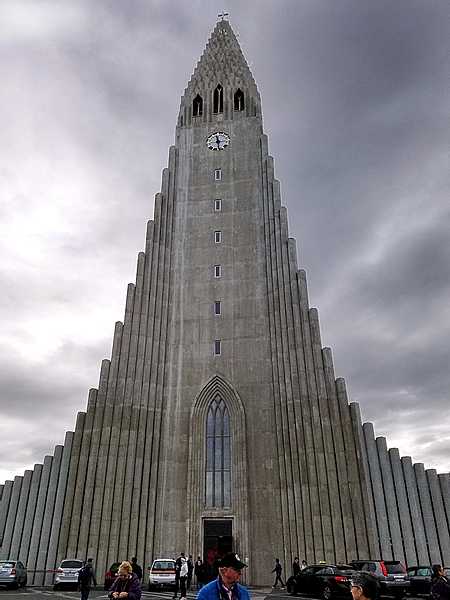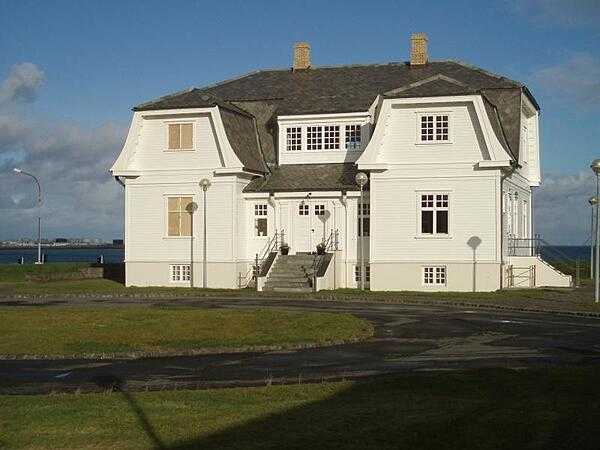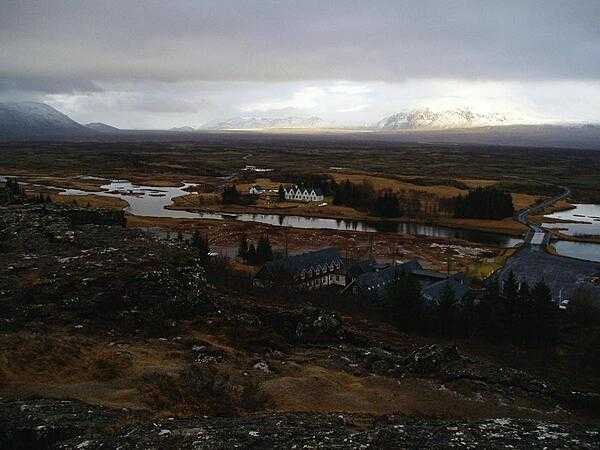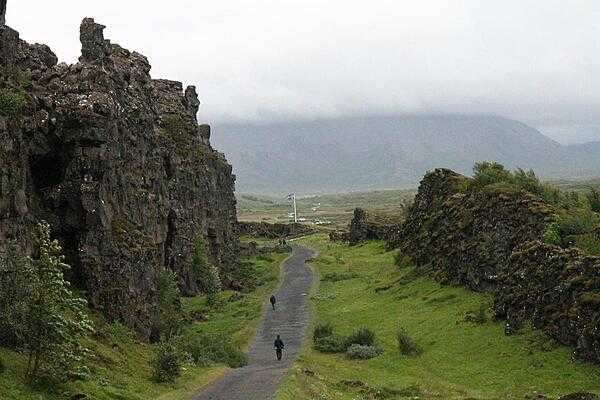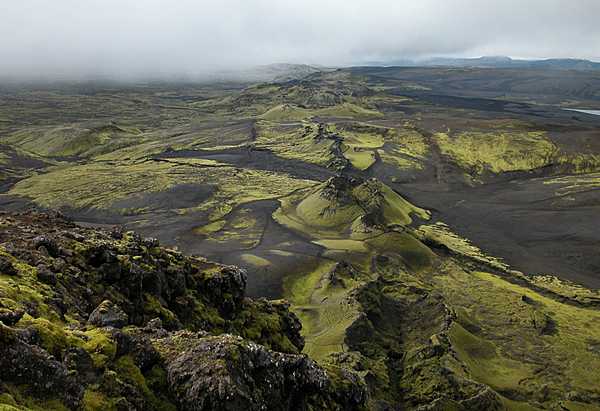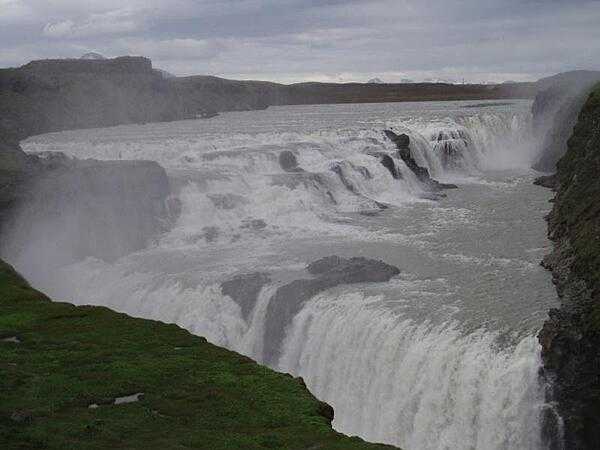Iceland - IS - ISL - ISL - Europe
Last updated: January 05, 2026
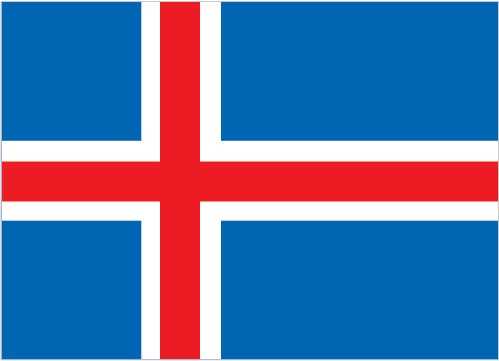
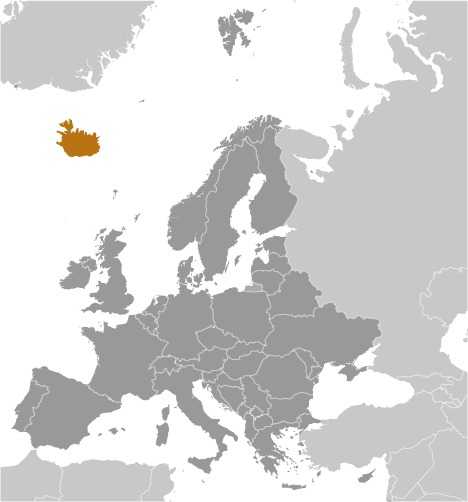
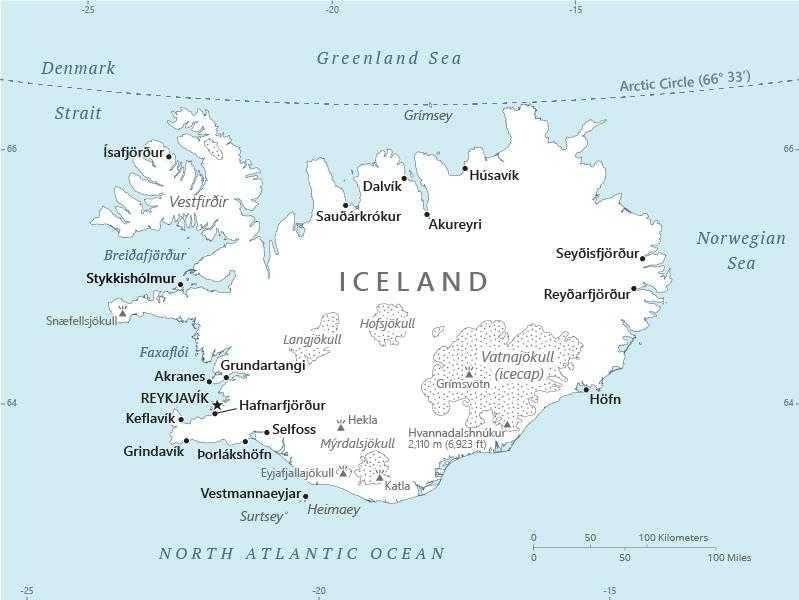
Iceland Images
Iceland Factbook Data
Diplomatic representation from the US
chief of mission: Ambassador (vacant); Chargé d’Affaires Erin SAWYER (since January 2025)
embassy: Engjateigur 7, 105 Reykjavik
mailing address: 5640 Reykjavik Place, Washington, D.C. 20521-5640
telephone: [354] 595-2200
FAX: [354] 562-9118
email address and website:
ReykjavikConsular@state.gov
https://is.usembassy.gov/
embassy: Engjateigur 7, 105 Reykjavik
mailing address: 5640 Reykjavik Place, Washington, D.C. 20521-5640
telephone: [354] 595-2200
FAX: [354] 562-9118
email address and website:
ReykjavikConsular@state.gov
https://is.usembassy.gov/
Age structure
0-14 years: 19.8% (male 36,692/female 35,239)
15-64 years: 63.2% (male 116,210/female 113,810)
65 years and over: 17.1% (2024 est.) (male 29,366/female 32,719)
15-64 years: 63.2% (male 116,210/female 113,810)
65 years and over: 17.1% (2024 est.) (male 29,366/female 32,719)
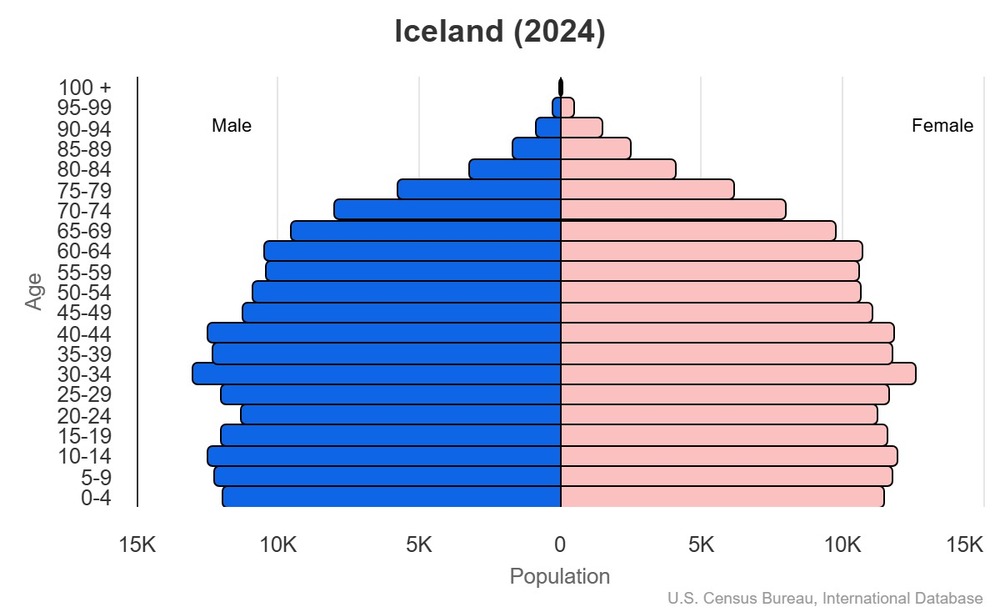
This is the population pyramid for Iceland. A population pyramid illustrates the age and sex structure of a country's population and may provide insights about political and social stability, as well as economic development. The population is distributed along the horizontal axis, with males shown on the left and females on the right. The male and female populations are broken down into 5-year age groups represented as horizontal bars along the vertical axis, with the youngest age groups at the bottom and the oldest at the top. The shape of the population pyramid gradually evolves over time based on fertility, mortality, and international migration trends.
For additional information, please see the entry for Population pyramid on the Definitions and Notes page.
For additional information, please see the entry for Population pyramid on the Definitions and Notes page.
Geographic coordinates
65 00 N, 18 00 W
Sex ratio
at birth: 1.05 male(s)/female
0-14 years: 1.04 male(s)/female
15-64 years: 1.02 male(s)/female
65 years and over: 0.9 male(s)/female
total population: 1 male(s)/female (2024 est.)
0-14 years: 1.04 male(s)/female
15-64 years: 1.02 male(s)/female
65 years and over: 0.9 male(s)/female
total population: 1 male(s)/female (2024 est.)
Natural hazards
earthquakes and volcanic activity
volcanism: Iceland is situated on top of a hotspot and experiences severe volcanic activity; Eyjafjallajokull (1,666 m) erupted in 2010, sending ash high into the atmosphere and seriously disrupting European air traffic; scientists continue to monitor nearby Katla (1,512 m), which has a high probability of eruption; Grimsvoetn and Hekla are Iceland's most active volcanoes; other historically active volcanoes include Askja, Bardarbunga, Brennisteinsfjoll, Esjufjoll, Hengill, Krafla, Krisuvik, Kverkfjoll, Oraefajokull, Reykjanes, Torfajokull, and Vestmannaeyjar
volcanism: Iceland is situated on top of a hotspot and experiences severe volcanic activity; Eyjafjallajokull (1,666 m) erupted in 2010, sending ash high into the atmosphere and seriously disrupting European air traffic; scientists continue to monitor nearby Katla (1,512 m), which has a high probability of eruption; Grimsvoetn and Hekla are Iceland's most active volcanoes; other historically active volcanoes include Askja, Bardarbunga, Brennisteinsfjoll, Esjufjoll, Hengill, Krafla, Krisuvik, Kverkfjoll, Oraefajokull, Reykjanes, Torfajokull, and Vestmannaeyjar
Area - comparative
slightly smaller than Pennsylvania; about the same size as Kentucky

slightly smaller than Pennsylvania; about the same size as Kentucky
Background
Settled by Norwegian and Celtic (Scottish and Irish) immigrants during the late 9th and 10th centuries A.D., Iceland boasts the world's oldest functioning legislative assembly, the Althingi, which was established in 930. Independent for over 300 years, Iceland was subsequently ruled by Norway and Denmark. Fallout from the Askja volcano of 1875 devastated the Icelandic economy and caused widespread famine. Over the next quarter-century, 20% of the island's population emigrated, mostly to Canada and the US. Denmark granted limited home rule in 1874 and complete independence in 1944. The second half of the 20th century saw substantial economic growth driven primarily by the fishing industry. The economy diversified greatly after the country joined the European Economic Area in 1994, but the global financial crisis hit Iceland especially hard in the years after 2008. The economy is now on an upward trajectory, primarily thanks to a tourism and construction boom. Literacy, longevity, and social cohesion are first-rate by world standards.
Environmental issues
water pollution from fertilizer runoff
International environmental agreements
party to: Air Pollution, Air Pollution-Persistent Organic Pollutants, Antarctic Treaty, Biodiversity, Climate Change, Climate Change-Kyoto Protocol, Climate Change-Paris Agreement, Comprehensive Nuclear Test Ban, Desertification, Endangered Species, Hazardous Wastes, Law of the Sea, Marine Dumping-London Convention, Marine Dumping-London Protocol, Nuclear Test Ban, Ozone Layer Protection, Ship Pollution, Wetlands, Whaling
signed, but not ratified: Air Pollution-Heavy Metals, Environmental Modification, Marine Life Conservation
signed, but not ratified: Air Pollution-Heavy Metals, Environmental Modification, Marine Life Conservation
Population below poverty line
8.8% (2017 est.)
note: % of population with income below national poverty line
note: % of population with income below national poverty line
Household income or consumption by percentage share
lowest 10%: 3.7% (2018 est.)
highest 10%: 21.7% (2018 est.)
note: % share of income accruing to lowest and highest 10% of population
highest 10%: 21.7% (2018 est.)
note: % share of income accruing to lowest and highest 10% of population
Exports - commodities
aluminum, fish, orthopedic appliances, animal meal, iron alloys (2023)
note: top five export commodities based on value in dollars
note: top five export commodities based on value in dollars
Exports - partners
Netherlands 27%, Germany 11%, USA 10%, UK 8%, Norway 6% (2023)
note: top five export partners based on percentage share of exports
note: top five export partners based on percentage share of exports
Administrative divisions
64 municipalities (sveitarfelog, singular - sveitarfelagidh); Akranes, Akureyri, Arneshreppur, Asahreppur, Blaskogabyggdh, Bolungarvik, Borgarbyggdh, Dalabyggdh, Dalvikurbyggdh, Eyjafjardharsveit, Eyja-og Miklaholtshreppur, Fjallabyggdh, Fjardhabyggdh, Fljotsdalshreppur, Floahreppur, Gardhabaer, Grimsnes-og Grafningshreppur, Grindavikurbaer, Grundarfjardharbaer, Grytubakkahreppur, Hafnarfjordhur, Horgarsveit, Hrunamannahreppur, Hunathing Vestra, Hunabyggdh, Hvalfjardharsveit, Hveragerdhi, Isafjardharbaer, Kaldrananeshreppur, Kjosarhreppur, Kopavogur, Langanesbyggdh, Mosfellsbaer, Mulathing, Myrdalshreppur, Nordhurthing, Rangarthing Eystra, Rangarthing Ytra, Reykholahreppur, Reykjanesbaer, Reykjavik, Seltjarnarnes, Skaftarhreppur, Skagabyggdh, Skagafjordhur, Skeidha-og Gnupverjahreppur, Skorradalshreppur, Snaefellsbaer, Strandabyggdh, Stykkisholmur, Sudhavikurhreppur, Sudhurnesjabaer, Svalbardhsstrandarhreppur, Sveitarfelagidh Arborg, Sveitarfelagidh Hornafjordhur, Sveitarfelagidh Olfus, Sveitarfelagidh Skagastrond, Sveitarfelagidh Vogar, Talknafjardharhreppur, Thingeyjarsveit, Tjorneshreppur, Vestmannaeyjar, Vesturbyggdh, Vopnafjardharhreppur
Agricultural products
milk, chicken, lamb/mutton, barley, potatoes, pork, beef, eggs, other meats, cucumbers/gherkins (2023)
note: top ten agricultural products based on tonnage
note: top ten agricultural products based on tonnage
Military and security forces
no regular military forces; the Icelandic National Police, the regional police forces, and the Icelandic Coast Guard fall under the purview of the Ministry of Justice (2025)
note: the Icelandic Coast Guard is responsible for operational defense tasks in Iceland including but not limited to operation of Keflavik Air Base, special security zones, and the Icelandic air defense system; it also coordinates with NATO in such areas as air surveillance and military defense exercises
note: the Icelandic Coast Guard is responsible for operational defense tasks in Iceland including but not limited to operation of Keflavik Air Base, special security zones, and the Icelandic air defense system; it also coordinates with NATO in such areas as air surveillance and military defense exercises
Budget
revenues: $10.023 billion (2023 est.)
expenditures: $10.364 billion (2023 est.)
note: central government revenues (excluding grants) and expenditures converted to US dollars at average official exchange rate for year indicated
expenditures: $10.364 billion (2023 est.)
note: central government revenues (excluding grants) and expenditures converted to US dollars at average official exchange rate for year indicated
Capital
name: Reykjavik
geographic coordinates: 64 09 N, 21 57 W
time difference: UTC 0 (5 hours ahead of Washington, DC, during Standard Time)
etymology: the name means "smoky bay" in Icelandic and refers to the steam from the hot springs in the area
geographic coordinates: 64 09 N, 21 57 W
time difference: UTC 0 (5 hours ahead of Washington, DC, during Standard Time)
etymology: the name means "smoky bay" in Icelandic and refers to the steam from the hot springs in the area
Imports - commodities
refined petroleum, cars, carbon-based electronics, aluminum oxide, computers (2023)
note: top five import commodities based on value in dollars
note: top five import commodities based on value in dollars
Climate
temperate; moderated by North Atlantic Current; mild, windy winters; damp, cool summers
Coastline
4,970 km
Constitution
history: several previous; latest ratified 16 June 1944, effective 17 June 1944 (at independence)
amendment process: proposed by the Althingi; passage requires approval by the Althingi and by the next elected Althingi, and confirmation by the president of the republic; proposed amendments to Article 62 of the constitution – that the Evangelical Lutheran Church shall be the state church of Iceland – also require passage by referendum
amendment process: proposed by the Althingi; passage requires approval by the Althingi and by the next elected Althingi, and confirmation by the president of the republic; proposed amendments to Article 62 of the constitution – that the Evangelical Lutheran Church shall be the state church of Iceland – also require passage by referendum
Exchange rates
Icelandic kronur (ISK) per US dollar -
Exchange rates:
137.958 (2024 est.)
137.943 (2023 est.)
135.28 (2022 est.)
126.989 (2021 est.)
135.422 (2020 est.)
Exchange rates:
137.958 (2024 est.)
137.943 (2023 est.)
135.28 (2022 est.)
126.989 (2021 est.)
135.422 (2020 est.)
Executive branch
chief of state: President Halla TOMASDOTTIR (since 1 August 2024)
head of government: Prime Minister Kristrun FROSTADOTTIR (since 21 December 2024)
cabinet: Cabinet appointed by the president upon the recommendation of the prime minister
election/appointment process: president directly elected by simple-majority popular vote for a 4-year term (no term limits); following legislative elections, the leader of the majority party or majority coalition becomes prime minister
most recent election date: 1 June 2024
election results:
2024: Halla TOMASDOTTIR elected president; percent of vote - Halla TOMASDOTTIR (independent) 34.1%, Katrin JAKOBSDOTTIR (Left-Green Movement) 25.2%, Halla Hrund LOGADOTTIR (independent) 15.7%, Jon GNARR (Social Democratic Alliance) 10.1%, Baldur PORHALLSSON (independent) 8.4%, other 6.5%
2020: Gudni Thorlacius JOHANNESSON reelected president; percent of vote - Gudni Thorlacius JOHANNESSON (independent) 92.2%, Gudmundur Franklin JONSSON (independent) 7.8%
expected date of next election: June 2028
head of government: Prime Minister Kristrun FROSTADOTTIR (since 21 December 2024)
cabinet: Cabinet appointed by the president upon the recommendation of the prime minister
election/appointment process: president directly elected by simple-majority popular vote for a 4-year term (no term limits); following legislative elections, the leader of the majority party or majority coalition becomes prime minister
most recent election date: 1 June 2024
election results:
2024: Halla TOMASDOTTIR elected president; percent of vote - Halla TOMASDOTTIR (independent) 34.1%, Katrin JAKOBSDOTTIR (Left-Green Movement) 25.2%, Halla Hrund LOGADOTTIR (independent) 15.7%, Jon GNARR (Social Democratic Alliance) 10.1%, Baldur PORHALLSSON (independent) 8.4%, other 6.5%
2020: Gudni Thorlacius JOHANNESSON reelected president; percent of vote - Gudni Thorlacius JOHANNESSON (independent) 92.2%, Gudmundur Franklin JONSSON (independent) 7.8%
expected date of next election: June 2028
Flag
description: blue with a red cross outlined in white extending to the edges of the flag; the cross is shifted to the left in the style of the Dannebrog (Danish flag)
meaning: red stands for the island's volcanic fires, white for the snow and ice fields, and blue for the ocean
meaning: red stands for the island's volcanic fires, white for the snow and ice fields, and blue for the ocean
Independence
1 December 1918 (became a sovereign state under the Danish Crown); 17 June 1944 (from Denmark; birthday of Jon SIGURDSSON, leader of Iceland's 19th-century independence movement)
Industries
tourism, fish processing; aluminum smelting; geothermal power, hydropower; medical/pharmaceutical products
Judicial branch
highest court(s): Supreme Court or Haestirettur (consists of 7 judges)
judge selection and term of office: judges proposed by Ministry of Interior selection committee and appointed by the president for an indefinite period
subordinate courts: Appellate Court or Landsrettur; 8 district courts; Labor Court
judge selection and term of office: judges proposed by Ministry of Interior selection committee and appointed by the president for an indefinite period
subordinate courts: Appellate Court or Landsrettur; 8 district courts; Labor Court
Land boundaries
total: 0 km
Land use
agricultural land: 16.2% (2023 est.)
arable land: 1.2% (2023 est.)
permanent crops: 0% (2022 est.)
permanent pasture: 15% (2023 est.)
forest: 0.6% (2023 est.)
other: 82.6% (2023 est.)
arable land: 1.2% (2023 est.)
permanent crops: 0% (2022 est.)
permanent pasture: 15% (2023 est.)
forest: 0.6% (2023 est.)
other: 82.6% (2023 est.)
Legal system
civil law system influenced by the Danish model
Legislative branch
legislature name: Parliament (Althingi)
legislative structure: unicameral
number of seats: 63 (all directly elected)
electoral system: proportional representation
scope of elections: full renewal
term in office: 4 years
most recent election date: 11/30/2024
parties elected and seats per party: Social Democratic Alliance (SDA) (15); Independence Party (IP) (14); Liberal Reform Party (11); People’s Party (10); Center Party (8); Progressive Party (PP) (5)
percentage of women in chamber: 46%
expected date of next election: November 2028
legislative structure: unicameral
number of seats: 63 (all directly elected)
electoral system: proportional representation
scope of elections: full renewal
term in office: 4 years
most recent election date: 11/30/2024
parties elected and seats per party: Social Democratic Alliance (SDA) (15); Independence Party (IP) (14); Liberal Reform Party (11); People’s Party (10); Center Party (8); Progressive Party (PP) (5)
percentage of women in chamber: 46%
expected date of next election: November 2028
Maritime claims
territorial sea: 12 nm
exclusive economic zone: 200 nm
continental shelf: 200 nm or to the edge of the continental margin
exclusive economic zone: 200 nm
continental shelf: 200 nm or to the edge of the continental margin
International organization participation
Arctic Council, Australia Group, BIS, CBSS, CD, CE, EAPC, EBRD, EFTA, FAO, FATF, IAEA, IBRD, ICAO, ICC (national committees), ICCt, ICRM, IDA, IFAD, IFC, IFRCS, IHO, ILO, IMF, IMO, IMSO, Interpol, IOC, IOM, IPU, ISO, ITSO, ITU, ITUC (NGOs), MIGA, NATO, NC, NEA, NIB, NSG, OAS (observer), OECD, OPCW, OSCE, PCA, Schengen Convention, UN, UNCTAD, UNESCO, UPU, WCO, WHO, WIPO, WMO, WTO
National holiday
Independence Day, 17 June (1944)
Nationality
noun: Icelander(s)
adjective: Icelandic
adjective: Icelandic
Natural resources
fish, hydropower, geothermal power, diatomite
Geography - note
strategic location between Greenland and Europe; westernmost European country; Reykjavik is the northernmost national capital in the world; more land covered by glaciers than in all of continental Europe
Economic overview
high-income North Atlantic island economy; not an EU member but market integration via European Economic Area (EEA); dominant tourism, fishing, and aluminum industries vulnerable to demand swings and disruption from volcanic activity; inflation remains above target rate; barriers to foreign business access and economic diversification
Political parties
Center Party or M
Independence Party or D
Liberal Reform Party or C
People's Party or F
Progressive Party or B
Social Democratic Alliance or S
Independence Party or D
Liberal Reform Party or C
People's Party or F
Progressive Party or B
Social Democratic Alliance or S
Suffrage
18 years of age; universal
Terrain
mostly plateau interspersed with mountain peaks, icefields; coast deeply indented by bays and fiords
Government type
unitary parliamentary republic
Country name
conventional long form: none
conventional short form: Iceland
local long form: none
local short form: Island
etymology: Floki VILGERDARSON, an early Norse explorer of the island in the 10th century, applied the name "Land of Ice," from the local words ís (ice) and land (land)
conventional short form: Iceland
local long form: none
local short form: Island
etymology: Floki VILGERDARSON, an early Norse explorer of the island in the 10th century, applied the name "Land of Ice," from the local words ís (ice) and land (land)
Location
Northern Europe, island between the Greenland Sea and the North Atlantic Ocean, northwest of the United Kingdom
Map references
Arctic Region
Irrigated land
0.5 sq km (2022)
Diplomatic representation in the US
chief of mission: Ambassador Svanhildur Hólm VALSDÓTTIR (since 18 September 2024)
chancery: House of Sweden, 2900 K Street NW, #509, Washington, DC 20007
telephone: [1] (202) 265-6653
FAX: [1] (202) 265-6656
email address and website:
washington@mfa.is
https://www.government.is/diplomatic-missions/embassy-of-iceland-in-washington-d.c/
chancery: House of Sweden, 2900 K Street NW, #509, Washington, DC 20007
telephone: [1] (202) 265-6653
FAX: [1] (202) 265-6656
email address and website:
washington@mfa.is
https://www.government.is/diplomatic-missions/embassy-of-iceland-in-washington-d.c/
Internet users
percent of population: 100% (2023 est.)
Internet country code
.is
Refugees and internally displaced persons
refugees: 8,960 (2024 est.)
IDPs: 3,700 (2024 est.)
stateless persons: 31 (2024 est.)
IDPs: 3,700 (2024 est.)
stateless persons: 31 (2024 est.)
GDP (official exchange rate)
$33.463 billion (2024 est.)
note: data in current dollars at official exchange rate
note: data in current dollars at official exchange rate
Total renewable water resources
170 billion cubic meters (2022 est.)
School life expectancy (primary to tertiary education)
total: 19 years (2022 est.)
male: 18 years (2022 est.)
female: 20 years (2022 est.)
male: 18 years (2022 est.)
female: 20 years (2022 est.)
Urbanization
urban population: 94% of total population (2023)
rate of urbanization: 0.74% annual rate of change (2020-25 est.)
rate of urbanization: 0.74% annual rate of change (2020-25 est.)
Broadcast media
state-owned public TV broadcaster (RUV) operates 21 TV channels nationally; every household is required to have RUV, which doubles as the emergency broadcast network; 3 privately owned TV stations; 100% of households have multi-channel services though digital and/or fiber-optic connections; RUV operates 3 national and 4 regional radio stations; 1 privately owned radio conglomerate, Syn (4 stations), broadcasts nationwide; over 20 regional radio stations (2019)
Drinking water source
improved:
urban: 100% of population (2022 est.)
rural: 100% of population (2022 est.)
total: 100% of population (2022 est.)
unimproved:
urban: 0% of population (2022 est.)
rural: 0% of population (2022 est.)
total: 0% of population (2022 est.)
urban: 100% of population (2022 est.)
rural: 100% of population (2022 est.)
total: 100% of population (2022 est.)
unimproved:
urban: 0% of population (2022 est.)
rural: 0% of population (2022 est.)
total: 0% of population (2022 est.)
National anthem(s)
title: "Lofsongur" (Song of Praise)
lyrics/music: Matthias JOCHUMSSON/Sveinbjorn SVEINBJORNSSON
history: adopted 1918
lyrics/music: Matthias JOCHUMSSON/Sveinbjorn SVEINBJORNSSON
history: adopted 1918
This is an audio of the National Anthem for Iceland. The national anthem is generally a patriotic musical composition - usually in the form of a song or hymn of praise - that evokes and eulogizes the history, traditions, or struggles of a nation or its people. National anthems can be officially recognized as a national song by a country's constitution or by an enacted law, or simply by tradition. Although most anthems contain lyrics, some do not.
Major urban areas - population
216,000 REYKJAVIK (capital) (2018)
International law organization participation
has not submitted an ICJ jurisdiction declaration; accepts ICCt jurisdiction
Physician density
4.37 physicians/1,000 population (2023)
Hospital bed density
2.8 beds/1,000 population (2020 est.)
National symbol(s)
gyrfalcon
Mother's mean age at first birth
28.7 years (2020 est.)
GDP - composition, by end use
household consumption: 49.3% (2023 est.)
government consumption: 25.3% (2023 est.)
investment in fixed capital: 24.8% (2023 est.)
investment in inventories: 0.7% (2023 est.)
exports of goods and services: 43.4% (2023 est.)
imports of goods and services: -43.3% (2023 est.)
note: figures may not total 100% due to rounding or gaps in data collection
government consumption: 25.3% (2023 est.)
investment in fixed capital: 24.8% (2023 est.)
investment in inventories: 0.7% (2023 est.)
exports of goods and services: 43.4% (2023 est.)
imports of goods and services: -43.3% (2023 est.)
note: figures may not total 100% due to rounding or gaps in data collection
Dependency ratios
total dependency ratio: 58.3 (2024 est.)
youth dependency ratio: 31.3 (2024 est.)
elderly dependency ratio: 27 (2024 est.)
potential support ratio: 3.7 (2024 est.)
youth dependency ratio: 31.3 (2024 est.)
elderly dependency ratio: 27 (2024 est.)
potential support ratio: 3.7 (2024 est.)
Citizenship
citizenship by birth: no
citizenship by descent only: at least one parent must be a citizen of Iceland
dual citizenship recognized: yes
residency requirement for naturalization: 3 to 7 years
citizenship by descent only: at least one parent must be a citizen of Iceland
dual citizenship recognized: yes
residency requirement for naturalization: 3 to 7 years
Population distribution
Iceland is almost entirely urban, with half of the population located in and around the capital of Reykjavik; smaller clusters are primarily found along the coast in the north and west
Electricity access
electrification - total population: 100% (2022 est.)
Civil aircraft registration country code prefix
TF
Sanitation facility access
improved:
urban: 100% of population (2022 est.)
rural: 100% of population (2022 est.)
total: 100% of population (2022 est.)
unimproved:
urban: 0% of population (2022 est.)
rural: 0% of population (2022 est.)
total: 0% of population (2022 est.)
urban: 100% of population (2022 est.)
rural: 100% of population (2022 est.)
total: 100% of population (2022 est.)
unimproved:
urban: 0% of population (2022 est.)
rural: 0% of population (2022 est.)
total: 0% of population (2022 est.)
Ethnic groups
Icelandic 78.7%, Polish 5.8%, Danish 1%, Ukrainian 1%, other 13.5% (2024 est.)
note: data represent population by country of birth
note: data represent population by country of birth
Religions
Evangelical Lutheran Church of Iceland (official) 58.6% Roman Catholic 3.8%, Independent Congregation of Reykjavik 2.6%, Independent Congregation of Hafnarfjordur 1.9%, pagan worship 1.5%, Icelandic Ethical Humanist Association 1.4%, other (includes Zuist and Pentecostal) or unspecified 18.7%, none 7.7% (2024 est.)
Languages
Icelandic, English, Polish, Nordic languages, German
Imports - partners
Norway 11%, China 9%, Germany 9%, Netherlands 8%, USA 7% (2023)
note: top five import partners based on percentage share of imports
note: top five import partners based on percentage share of imports
Elevation
highest point: Hvannadalshnukur (at Vatnajokull Glacier) 2,110 m
lowest point: Atlantic Ocean 0 m
mean elevation: 557 m
lowest point: Atlantic Ocean 0 m
mean elevation: 557 m
Health expenditure
8.6% of GDP (2022)
16.5% of national budget (2022 est.)
16.5% of national budget (2022 est.)
Total water withdrawal
municipal: 80 million cubic meters (2022 est.)
industrial: 198 million cubic meters (2022 est.)
agricultural: 300,000 cubic meters (2022 est.)
industrial: 198 million cubic meters (2022 est.)
agricultural: 300,000 cubic meters (2022 est.)
Waste and recycling
municipal solid waste generated annually: 225,300 tons (2024 est.)
percent of municipal solid waste recycled: 55.5% (2022 est.)
percent of municipal solid waste recycled: 55.5% (2022 est.)
National heritage
total World Heritage Sites: 3 (1 cultural, 2 natural)
selected World Heritage Site locales: Thingvellir National Park (c); Surtsey (n); Vatnajökull National Park - Dynamic Nature of Fire and Ice (n)
selected World Heritage Site locales: Thingvellir National Park (c); Surtsey (n); Vatnajökull National Park - Dynamic Nature of Fire and Ice (n)
Coal
consumption: 137,000 metric tons (2023 est.)
exports: 81 metric tons (2023 est.)
imports: 106,000 metric tons (2023 est.)
exports: 81 metric tons (2023 est.)
imports: 106,000 metric tons (2023 est.)
Electricity generation sources
hydroelectricity: 70.1% of total installed capacity (2023 est.)
geothermal: 29.9% of total installed capacity (2023 est.)
geothermal: 29.9% of total installed capacity (2023 est.)
Petroleum
refined petroleum consumption: 19,000 bbl/day (2024 est.)
Currently married women (ages 15-49)
48.5% (2023 est.)
Remittances
0.7% of GDP (2024 est.)
0.7% of GDP (2023 est.)
0.7% of GDP (2022 est.)
note: personal transfers and compensation between resident and non-resident individuals/households/entities
0.7% of GDP (2023 est.)
0.7% of GDP (2022 est.)
note: personal transfers and compensation between resident and non-resident individuals/households/entities
Geoparks
total global geoparks and regional networks: 2
global geoparks and regional networks: Katla; Reykjanes (2023)
global geoparks and regional networks: Katla; Reykjanes (2023)
Ports
total ports: 43 (2024)
large: 0
medium: 2
small: 2
very small: 17
size unknown: 22
ports with oil terminals: 5
key ports: Grundartangi, Reykjavik, Seydhisfjordhur, Vestmannaeyjar
large: 0
medium: 2
small: 2
very small: 17
size unknown: 22
ports with oil terminals: 5
key ports: Grundartangi, Reykjavik, Seydhisfjordhur, Vestmannaeyjar
National color(s)
blue, white, red
National coat of arms
Iceland’s coat of arms is derived from a 13th-century folktale about four guardians who protect the four corners of the nation; the bull protects the northwest, the eagle the northeast, the dragon the southeast, and the rock-giant the southwest; the shield displays the national flag, with red standing for Iceland’s volcanic fires, white for its snow and ice fields, and blue for the ocean
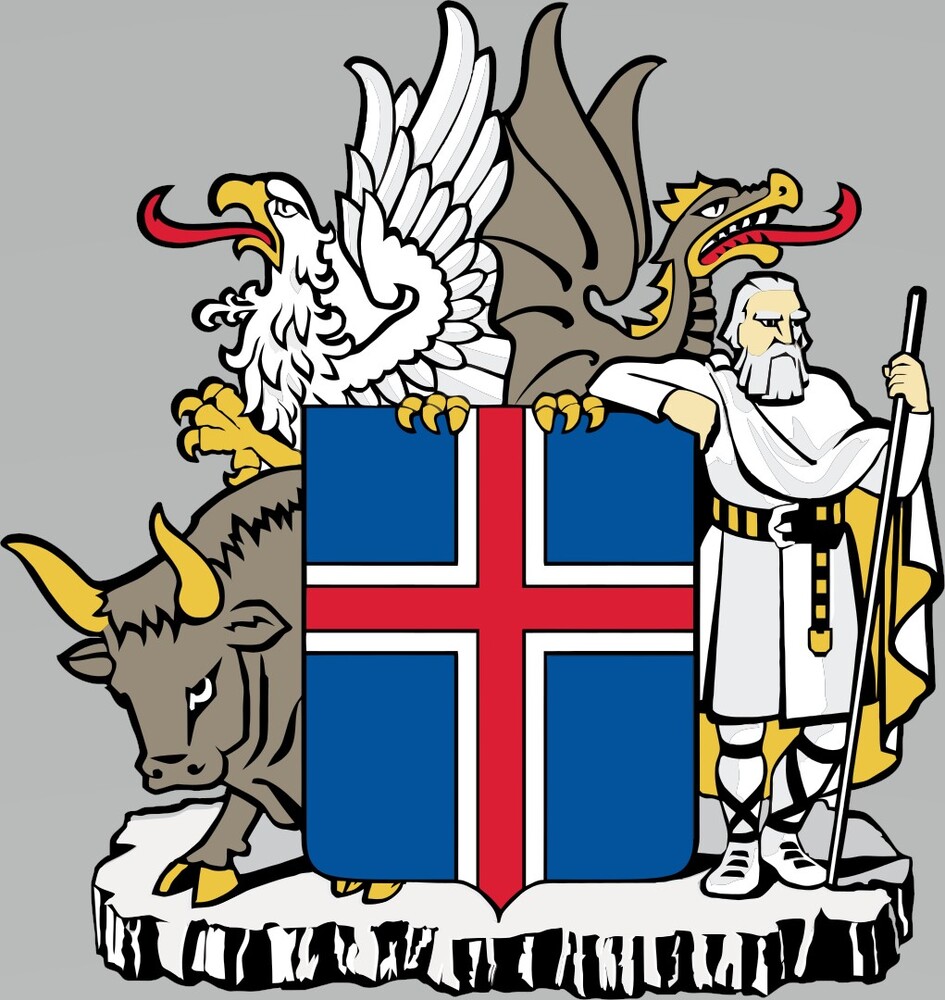
Iceland’s coat of arms is derived from a 13th-century folktale about four guardians who protect the four corners of the nation. The bull protects the northwest, the eagle the northeast, the dragon the southeast, and the rock-giant the southwest. The shield displays the national flag, with red standing for Iceland’s volcanic fires, white for its snow and ice fields, and blue for the ocean.
Particulate matter emissions
5.8 micrograms per cubic meter (2019 est.)
Labor force
248,400 (2024 est.)
note: number of people ages 15 or older who are employed or seeking work
note: number of people ages 15 or older who are employed or seeking work
Youth unemployment rate (ages 15-24)
total: 7.6% (2024 est.)
male: 8.3% (2024 est.)
female: 7% (2024 est.)
note: % of labor force ages 15-24 seeking employment
male: 8.3% (2024 est.)
female: 7% (2024 est.)
note: % of labor force ages 15-24 seeking employment
Maternal mortality ratio
3 deaths/100,000 live births (2023 est.)
Reserves of foreign exchange and gold
$6.403 billion (2024 est.)
$5.809 billion (2023 est.)
$5.887 billion (2022 est.)
note: holdings of gold (year-end prices)/foreign exchange/special drawing rights in current dollars
$5.809 billion (2023 est.)
$5.887 billion (2022 est.)
note: holdings of gold (year-end prices)/foreign exchange/special drawing rights in current dollars
Public debt
80.7% of GDP (2023 est.)
note: central government debt as a % of GDP
note: central government debt as a % of GDP
Unemployment rate
3.2% (2024 est.)
3.6% (2023 est.)
3.8% (2022 est.)
note: % of labor force seeking employment
3.6% (2023 est.)
3.8% (2022 est.)
note: % of labor force seeking employment
Population
total: 364,036 (2024 est.)
male: 182,268
female: 181,768
male: 182,268
female: 181,768
Carbon dioxide emissions
3.101 million metric tonnes of CO2 (2023 est.)
from coal and metallurgical coke: 376,000 metric tonnes of CO2 (2023 est.)
from petroleum and other liquids: 2.725 million metric tonnes of CO2 (2023 est.)
from coal and metallurgical coke: 376,000 metric tonnes of CO2 (2023 est.)
from petroleum and other liquids: 2.725 million metric tonnes of CO2 (2023 est.)
Area
total : 103,000 sq km
land: 100,250 sq km
water: 2,750 sq km
land: 100,250 sq km
water: 2,750 sq km
Taxes and other revenues
23.3% (of GDP) (2023 est.)
note: central government tax revenue as a % of GDP
note: central government tax revenue as a % of GDP
Real GDP (purchasing power parity)
$26.561 billion (2024 est.)
$26.424 billion (2023 est.)
$25.012 billion (2022 est.)
note: data in 2021 dollars
$26.424 billion (2023 est.)
$25.012 billion (2022 est.)
note: data in 2021 dollars
Airports
82 (2025)
Telephones - mobile cellular
total subscriptions: 478,000 (2023 est.)
subscriptions per 100 inhabitants: 123 (2022 est.)
subscriptions per 100 inhabitants: 123 (2022 est.)
Gini Index coefficient - distribution of family income
26.6 (2018 est.)
note: index (0-100) of income distribution; higher values represent greater inequality
note: index (0-100) of income distribution; higher values represent greater inequality
Inflation rate (consumer prices)
5.9% (2024 est.)
8.7% (2023 est.)
8.3% (2022 est.)
note: annual % change based on consumer prices
8.7% (2023 est.)
8.3% (2022 est.)
note: annual % change based on consumer prices
Current account balance
-$845.319 million (2024 est.)
$290.603 million (2023 est.)
-$698.165 million (2022 est.)
note: balance of payments - net trade and primary/secondary income in current dollars
$290.603 million (2023 est.)
-$698.165 million (2022 est.)
note: balance of payments - net trade and primary/secondary income in current dollars
Real GDP per capita
$65,600 (2024 est.)
$67,200 (2023 est.)
$65,500 (2022 est.)
note: data in 2021 dollars
$67,200 (2023 est.)
$65,500 (2022 est.)
note: data in 2021 dollars
Broadband - fixed subscriptions
total: 145,000 (2023 est.)
subscriptions per 100 inhabitants: 37 (2023 est.)
subscriptions per 100 inhabitants: 37 (2023 est.)
Tobacco use
total: 8% (2025 est.)
male: 7.9% (2025 est.)
female: 8% (2025 est.)
male: 7.9% (2025 est.)
female: 8% (2025 est.)
Obesity - adult prevalence rate
21.9% (2016)
Electricity
installed generating capacity: 3.005 million kW (2023 est.)
consumption: 19.584 billion kWh (2023 est.)
transmission/distribution losses: 543 million kWh (2023 est.)
consumption: 19.584 billion kWh (2023 est.)
transmission/distribution losses: 543 million kWh (2023 est.)
Merchant marine
total: 39 (2023)
by type: general cargo 5, oil tanker 2, other 32
by type: general cargo 5, oil tanker 2, other 32
Imports
$14.298 billion (2024 est.)
$13.63 billion (2023 est.)
$13.237 billion (2022 est.)
note: balance of payments - imports of goods and services in current dollars
$13.63 billion (2023 est.)
$13.237 billion (2022 est.)
note: balance of payments - imports of goods and services in current dollars
Exports
$13.916 billion (2024 est.)
$13.702 billion (2023 est.)
$13.114 billion (2022 est.)
note: balance of payments - exports of goods and services in current dollars
$13.702 billion (2023 est.)
$13.114 billion (2022 est.)
note: balance of payments - exports of goods and services in current dollars
Heliports
1 (2025)
Telephones - fixed lines
total subscriptions: 82,000 (2023 est.)
subscriptions per 100 inhabitants: 21 (2023 est.)
subscriptions per 100 inhabitants: 21 (2023 est.)
Alcohol consumption per capita
total: 7.72 liters of pure alcohol (2019 est.)
beer: 4.39 liters of pure alcohol (2019 est.)
wine: 2.11 liters of pure alcohol (2019 est.)
spirits: 1.22 liters of pure alcohol (2019 est.)
other alcohols: 0 liters of pure alcohol (2019 est.)
beer: 4.39 liters of pure alcohol (2019 est.)
wine: 2.11 liters of pure alcohol (2019 est.)
spirits: 1.22 liters of pure alcohol (2019 est.)
other alcohols: 0 liters of pure alcohol (2019 est.)
Life expectancy at birth
total population: 84 years (2024 est.)
male: 81.8 years
female: 86.3 years
male: 81.8 years
female: 86.3 years
Real GDP growth rate
0.5% (2024 est.)
5.6% (2023 est.)
9% (2022 est.)
note: annual GDP % growth based on constant local currency
5.6% (2023 est.)
9% (2022 est.)
note: annual GDP % growth based on constant local currency
Industrial production growth rate
-2.3% (2024 est.)
note: annual % change in industrial value added based on constant local currency
note: annual % change in industrial value added based on constant local currency
GDP - composition, by sector of origin
agriculture: 4% (2024 est.)
industry: 19.4% (2024 est.)
services: 65.5% (2024 est.)
note: figures may not total 100% due to non-allocated consumption not captured in sector-reported data
industry: 19.4% (2024 est.)
services: 65.5% (2024 est.)
note: figures may not total 100% due to non-allocated consumption not captured in sector-reported data
Education expenditure
7.3% of GDP (2022 est.)
15.7% national budget (2022 est.)
15.7% national budget (2022 est.)
Military - note
Iceland was one of the original 12 countries to sign the North Atlantic Treaty (also known as the Washington Treaty) in 1949; Iceland is the only NATO member that has no standing military force; defense of Iceland is a NATO commitment, and NATO maintains an air policing presence in Icelandic airspace; Iceland participates in international peacekeeping missions with the civilian-manned Icelandic Crisis Response Unit (ICRU)
Iceland also cooperates with the militaries of other regional countries through the Nordic Defense Cooperation (Denmark, Finland, Iceland, Norway, and Sweden) and the Joint Expeditionary Force (Denmark, Estonia, Finland, Iceland, Latvia, Lithuania, the Netherlands, Norway, Sweden and the UK); in 1951, Iceland and the US concluded an agreement to make arrangements regarding the defense of Iceland and for the use of facilities in Iceland to that end (2025)
Iceland also cooperates with the militaries of other regional countries through the Nordic Defense Cooperation (Denmark, Finland, Iceland, Norway, and Sweden) and the Joint Expeditionary Force (Denmark, Estonia, Finland, Iceland, Latvia, Lithuania, the Netherlands, Norway, Sweden and the UK); in 1951, Iceland and the US concluded an agreement to make arrangements regarding the defense of Iceland and for the use of facilities in Iceland to that end (2025)
Gross reproduction rate
0.94 (2025 est.)
Net migration rate
2.3 migrant(s)/1,000 population (2025 est.)
Median age
total: 38.2 years (2025 est.)
male: 37.4 years
female: 38.6 years
male: 37.4 years
female: 38.6 years
Total fertility rate
1.93 children born/woman (2025 est.)
Infant mortality rate
total: 1.6 deaths/1,000 live births (2025 est.)
male: 1.8 deaths/1,000 live births
female: 1.4 deaths/1,000 live births
male: 1.8 deaths/1,000 live births
female: 1.4 deaths/1,000 live births
Death rate
6.62 deaths/1,000 population (2025 est.)
Birth rate
12.47 births/1,000 population (2025 est.)
Population growth rate
0.82% (2025 est.)
